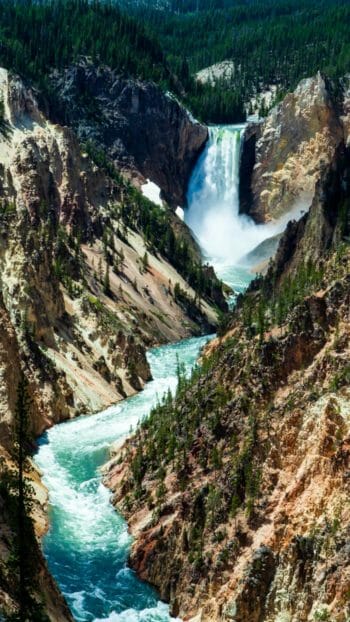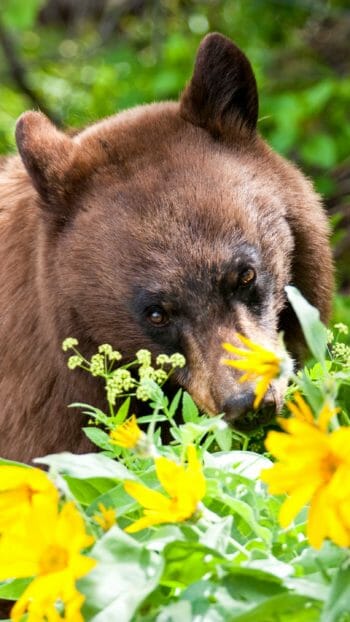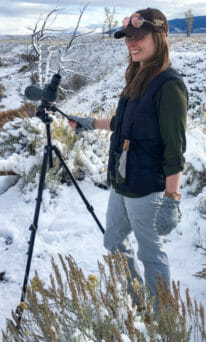A landscape of ancient mountains and mammoth lakes, punctuated by plumes of billowing steam from the rumbling geothermal forces beneath the surface, Yellowstone National Park is a unique land full of beauty and awe around every corner. It’s no wonder how Yellowstone became the first national park ever established in 1872- when explorers came across these natural phenomena, particularly the Midway Geyser Basin and the Grand Prismatic Spring, they were so astonished that they instantly knew that this land needed to be protected from any future development. From the Hayden Expedition in 1871, the expedition’s leader, Ferdinand Hayden, wrote:
“Nothing ever conceived by human art could equal the peculiar vividness and delicacy of color of these remarkable prismatic springs. Life becomes a privilege and a blessing after one has seen and thoroughly felt these incomparable types of nature’s cunning skill.”
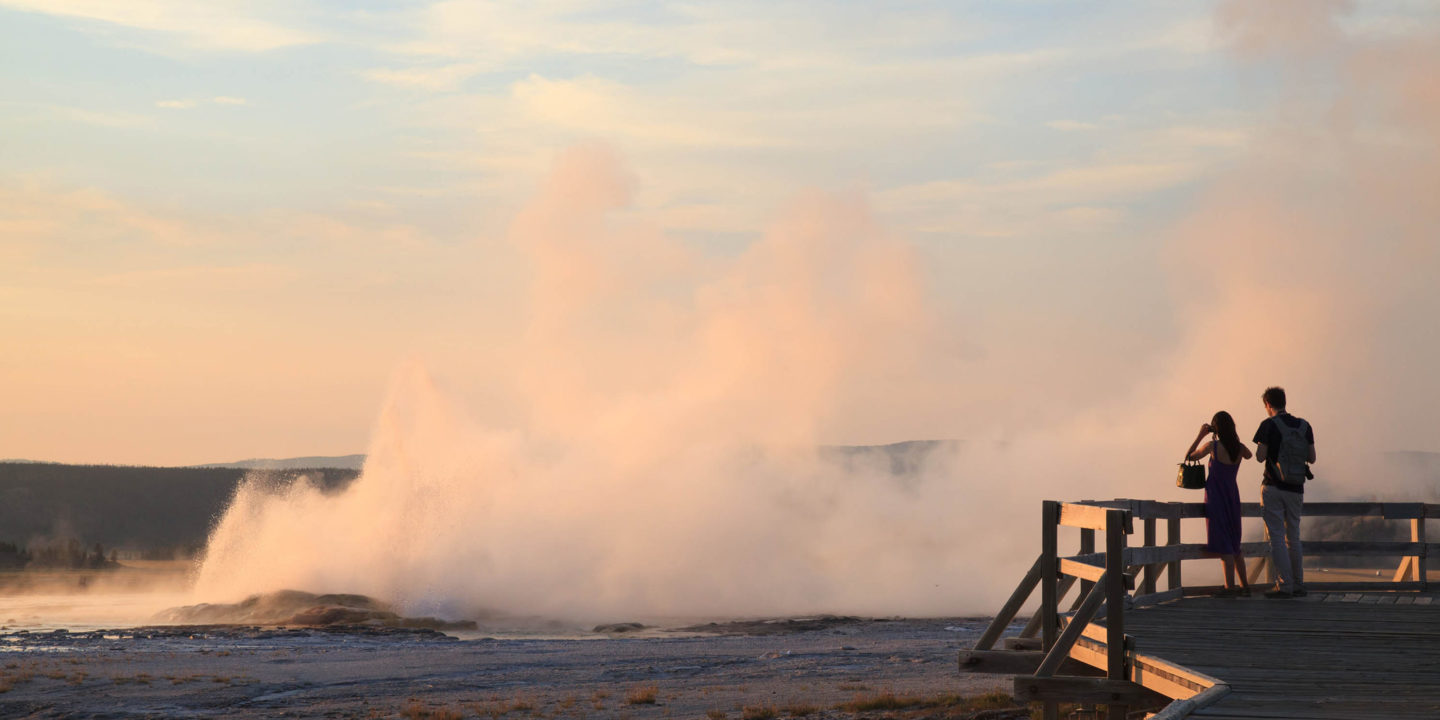
Mechanics of Geothermal Features
One of the major elements of the park that makes it so remarkable is the presence of a giant volcano that sits just a couple of miles beneath the surface. To give you an idea of how massive it is, the magma chamber of this volcano is so large that it could fill the Grand Canyon with magma 11 times! This volcanic hotspot is responsible for the extensive geothermal activity that we can see today from hot springs to mudpots to geysers, sending clouds of steam into the air and creating an otherworldly experience. These geothermal features form when the heat of the volcano rises closer to the surface. The heat and volcanic gasses make the hydrothermal fluids buoyant, raising them to the surface where they come into contact with the cold groundwater. Depending on the gasses present and the geological composition of the ground, different types of features will form.
Hot Springs
Hot springs form in a shallow depression in the ground that collects a natural outflow of hot water at the Earth’s surface, and groundwater from rain and snowfall.
Geysers
The formation of a geyser requires two specific conditions- a subsurface reservoir where accumulated water rises to high temperatures, and constriction in the opening to the surface which results in a pressurized chamber, allowing heat to far surpass boiling temperatures until an eruption occurs.
Mud Pots
Mud pots are formed when the fluid in the feature becomes acidic from the presence of gasses. The acid and steam eat away at the rock and soil, turning it to a thick clay that bubbles from the consistent rising pressure. Mud pots can reach a pH of 2, and their color varies greatly depending on the minerals and composition of the earth around them.
Fumaroles
Fumaroles are cracks or holes in the surface that emit steam. Typically the hottest features in the park, they reach such a high temperature that water usually turns to steam underground before they reach the surface, often resulting in dry features. Occasionally, water will pool at a fumarole.
The compilation and concentration of these geothermal features make Yellowstone a visual playground. Visitors can spend days gazing in awe at these volcanic trademarks, and one of the most popular and impressive places to do so is at Midway Geyser Basin.
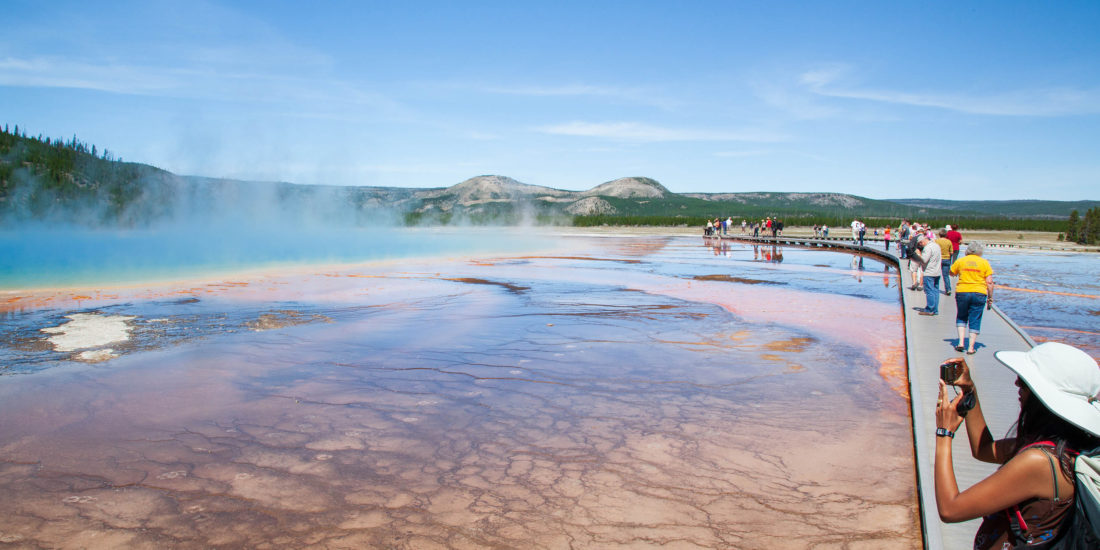
What You’ll Find at Midway Geyser Basin
This basin itself is comparatively small with a fairly short boardwalk of 0.8-miles, but it packs an impressive punch! There are several hot springs at this location, but the one that draws the crowds is Grand Prismatic Spring. This hot spring is the poster child for Yellowstone National Park, typically featured front and center and a prime example of the impressive swirling colors that form along the edges of thermal pools.
Grand Prismatic is the third largest hot spring in the world (the first two are located in New Zealand and Dominica), measuring 330 feet in diameter and more than 121 feet deep- a depth greater than a 10 story building! The temperature of the spring ranges between 145-188 degrees Fahrenheit. Along with its large, deep blue center, the rainbow of colors that bloom from the edges of the water are what captivate people. But what makes those colors?
The heat and gasses that rise to the surface create the perfect habitat for thermophilic bacteria. These are bacteria that love heat, thriving in environments just like this, and the large accumulation of them are called bacterial mats. The colors range from yellows, oranges, greens, reds, and browns based on the presence of chlorophyll and carotenoids. Each color is a different species of bacteria that has evolved to live at certain temperatures: brighter colors closer to the center thrive in hotter temperatures, while it transitions to darker oranges as the water flows away from the spring and cools to lower temperatures. Grand Prismatic Spring is probably the most impressive example of thermophilic bacterial life in the park, but it is not the only one. These colors can be seen in almost every thermally active area.
Excelsior Geyser is another prominent feature in the Midway Geyser Basin, and one with a story. It lacks the colorful tapestry that Grand Prismatic has, but it is an enormous thermal pool with a staggering temperature of 199 degrees Fahrenheit. It was formerly a geyser, displaying massive eruptions in the late 1800s, perhaps as late as 1901. Only one photograph was ever successfully taken of an eruption in 1888. Explorers on early expeditions described the days’ long eruptions with heights reaching 100-300 feet, hurling huge rocks out from its crater, and pumping so much water into the adjacent Firehole River that it caused torrential, steaming flows. It is thought that these violent eruptions damaged the underground plumbing system that allowed pressure to build, and today Excelsior behaves more like a hot spring. It still experiences extremely high temperatures causing it to bubble, and it expels 4,000-5,000 gallons of water into the Firehole River every minute!
Other features in this thermal area are Opal Pool and Turquoise Pool, much smaller hot springs but also boasting the beautiful blue hues. There are two ways to view the area: the boardwalk brings you up close and personal with the colorful bacterial mats and into the steam, and the overlook that is just under a mile-long hike along the Fairy Falls trail to get a sweeping view from above. When visiting the first option, it is extremely important to remain on the boardwalk and not touch or disturb the bacteria.
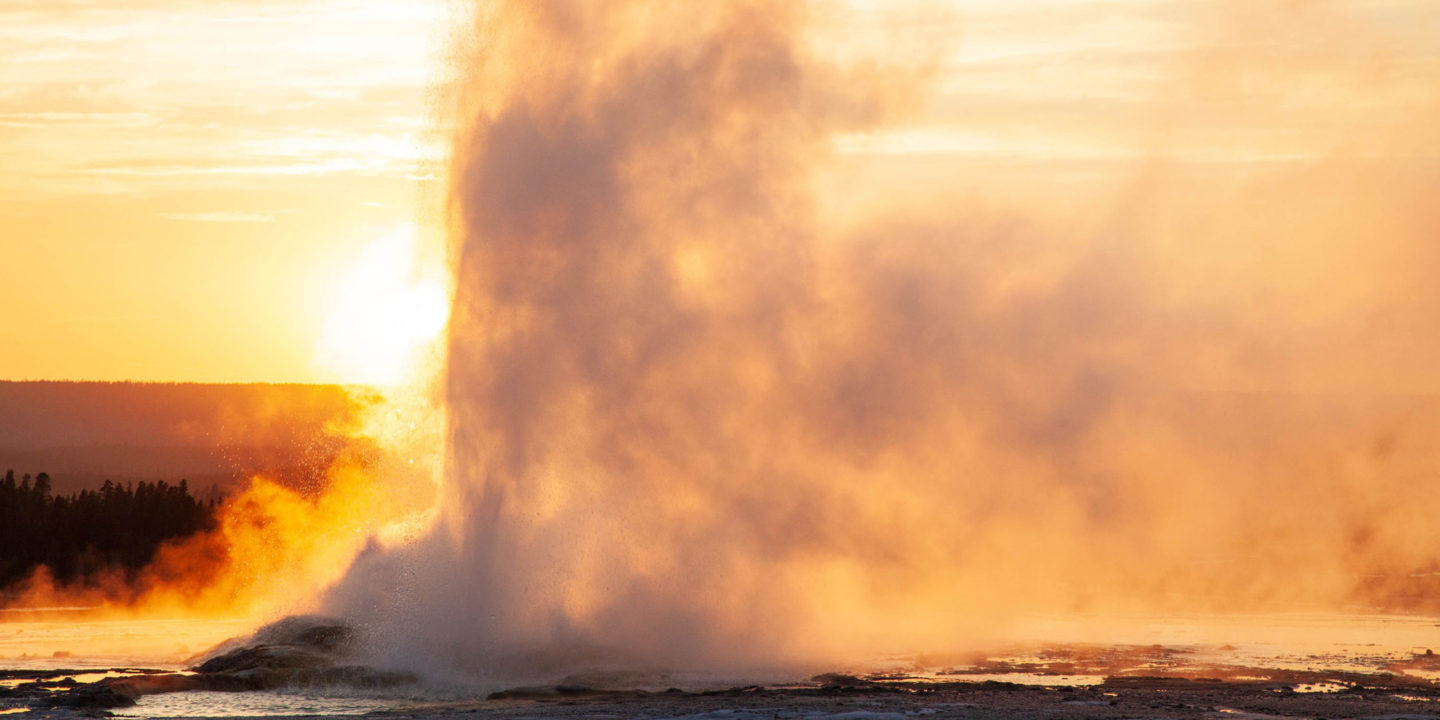
Getting There – Yellowstone Tours
Midway Geyser Basin is a popular destination for visitors staying in Jackson. Depending on your interests, it is often one of the highlights on our Yellowstone tours. Our day tours begin at sunrise to maximize our time to see as many wonders as we can. Your guide picks you up from your place of lodging to take you straight to Yellowstone, dropping you back at your hotel at the end of the day. Midway Geyser Basin is only a small part of the tour; you’ll also see Old Faithful Geyser, the Grand Canyon of Yellowstone, countless other thermal features, Hayden Valley, and wildlife!
If you’re craving more, or want more time to soak it all in, opt for our multi day Yellowstone tours! We offer 2 day and 3 day tours that allow you to move at a slower pace and spend more time in certain areas of the park. Want to visit more thermal boardwalks? Or spend time sitting by a rushing river? Maybe spend more time searching for wildlife and sitting with the sightings that you find. If you’re a photography buff, we offer a specific 3 day photography workshop, because we all know photography is about timing and patience!
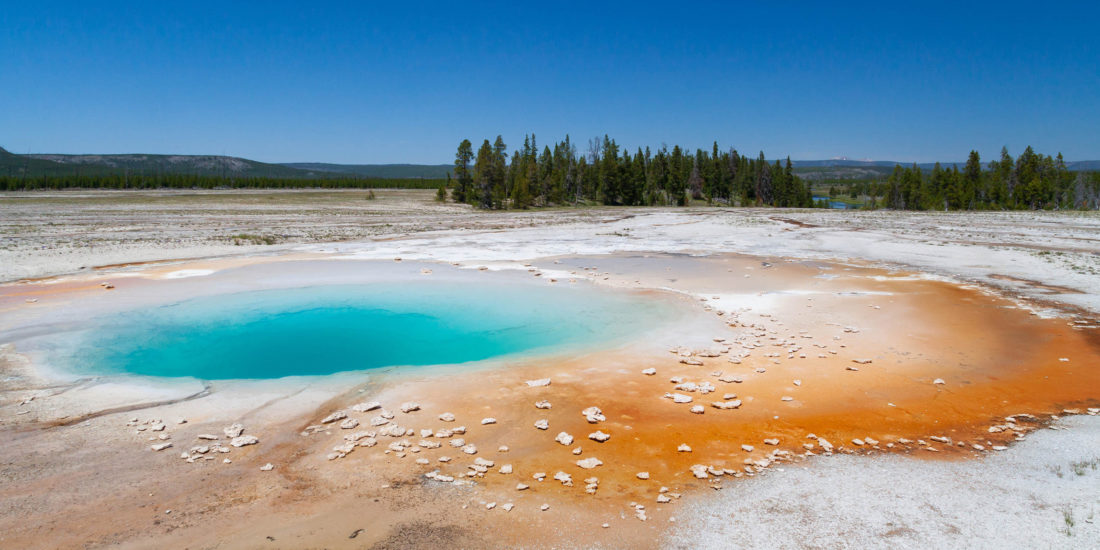
However you choose to visit Yellowstone, we’ve got you covered with comfortable vehicles and expert, experienced guides who are ready to show you the amazing wonders of Yellowstone. Be sure to book early to secure your preferred dates!


